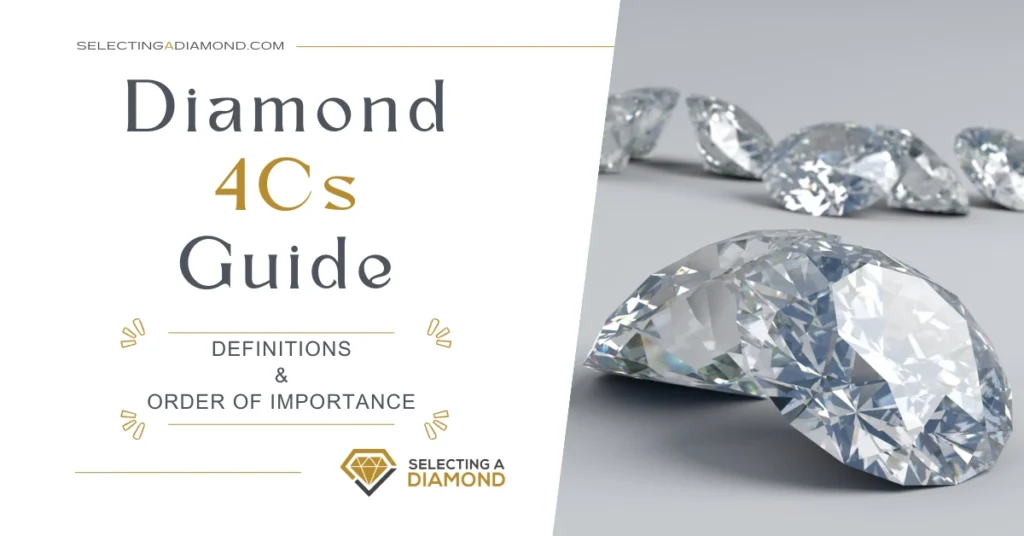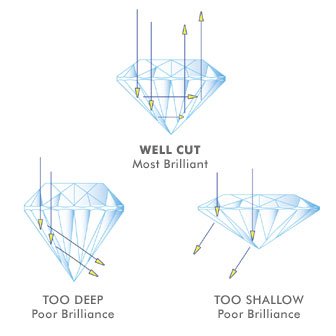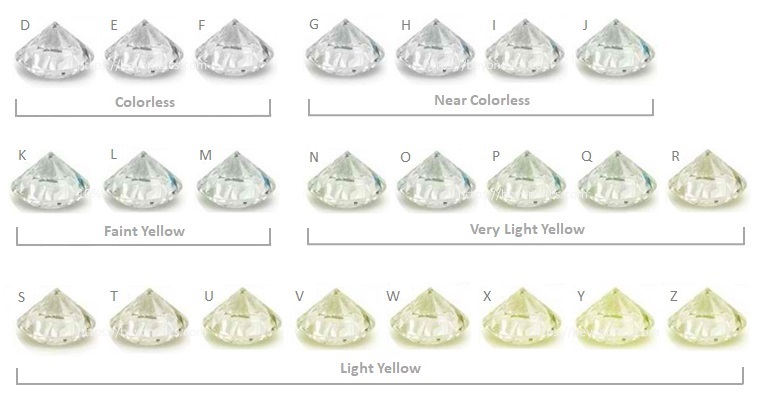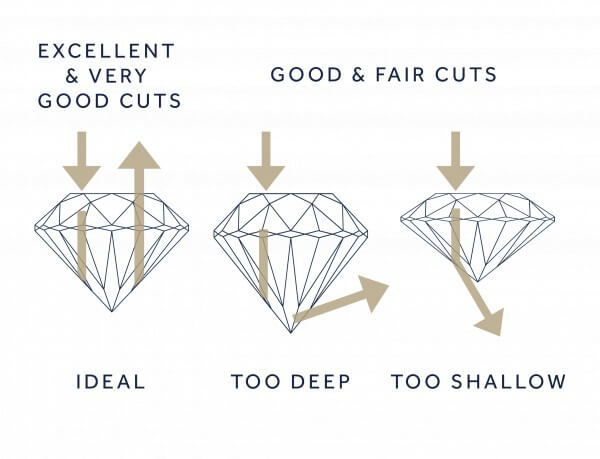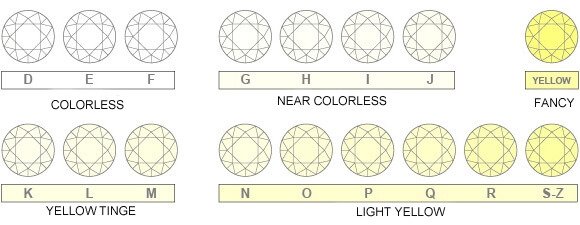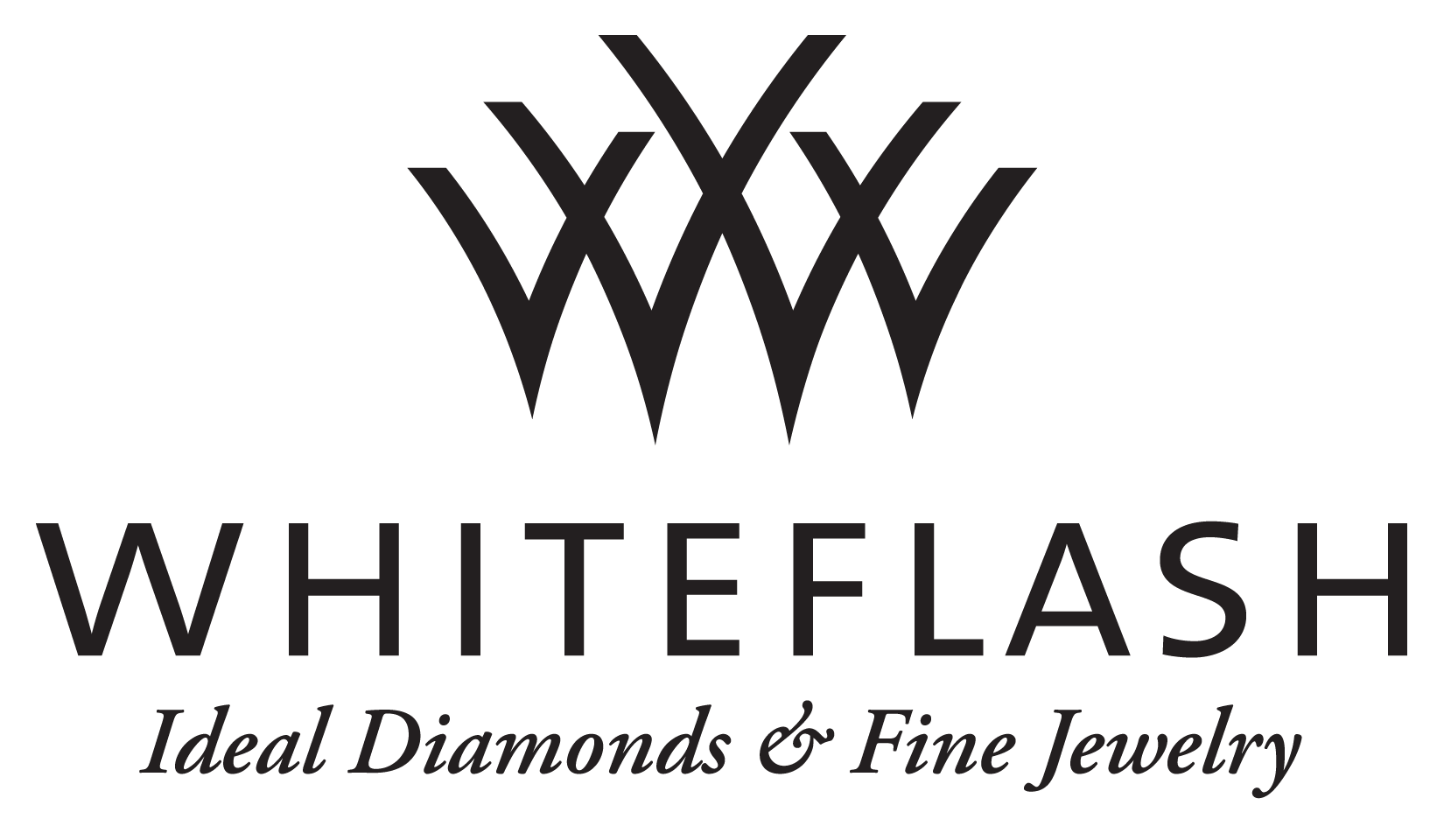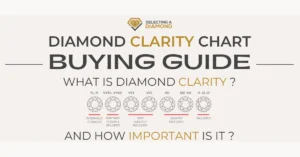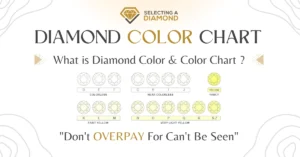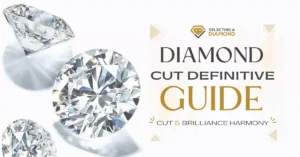Perhaps you’ve never delved so deeply into the technical details of a purchase before, but buying a diamond is a unique experience that calls for such depth.
It’s vital to equip yourself with a wealth of knowledge to make an informed decision. To assist you in this endeavor, we’ve crafted a comprehensive guide that covers everything you need to know before you buy a diamond.
Exploring The Core Aspects of Diamonds: The 4Cs
Have you ever wondered why the first filter options when browsing an online diamond store like James Allen or Blue Nile are the 4Cs: Cut, Color, Clarity, and Carat?
This isn’t some clever marketing trick designed to sway your attention—it’s quite the opposite. The 4Cs play a fundamental role in determining the diamond’s overall appearance, quality, and ability to refract light.
So before you embark on your diamond buying journey—be it online or at a brick-and-mortar store—it’s crucial to familiarize yourself with these core characteristics. Understanding what makes each one significant and identifying their relative importance can provide you with a decisive edge.
Within the content of this blog post, and throughout our entire website, we aim to reveal the industry secrets that local diamond retailers might prefer to keep hidden. You’ll gain insights on how to choose the perfect diamond for your budget without falling prey to overpricing.
Recommended Reading: James Allen Vs. Blue Nile: An In-Depth Comparison & Review
As each characteristic within the 4Cs operates independently of the others, it’s essential to comprehend each within its unique context.
To facilitate this, we’ve prepared four dedicated articles, each focused on explaining one of the 4Cs. Additionally, we’ve created a specialized piece on Round Cut Diamonds, the most popular shape, to delve deeper into this popular choice.
So, whether you’re a coffee connoisseur or a tea aficionado, grab your favorite brew, and begin exploring these articles at your own pace. Once you’ve delved into each characteristic, continue scrolling down to discover which of the 4Cs is the most critical to invest in.
4Cs of Diamond: Quick Overview
Understanding the main characteristics of a diamond, often referred to as the 4Cs—Carat, Color, Clarity, and Cut—enables you to shop smartly and confidently.
Here’s a simplified breakdown of each one to help you identify what to look for in your next diamond purchase:
Carat
This term refers to the weight of a diamond, with each carat equivalent to 200 milligrams (or 0.2 grams). Though the carat weight can suggest the size of the diamond, it doesn’t directly determine its physical appearance.
A diamond could have a substantial carat weight but a deep cut that makes it appear smaller when viewed from the top. Here’s an image to help visualize this concept.
Color
This aspect defines the degree of yellowness in a diamond, if any is present. Diamonds are graded on a color scale from D (colorless and highest quality) to K (faint color).
Color is a crucial characteristic to consider when buying a diamond, but bear in mind, a diamond’s color can only be accurately determined by comparing it with a known colored diamond. Therefore, even if a jeweler is promoting an E or F color diamond, you won’t perceive a noticeable difference when compared to a G color diamond.
Clarity
This measures the ‘cleanliness’ of a diamond or the absence of internal and external imperfections, known as inclusions and blemishes, respectively.
Naturally occurring features like tiny chips or internal ‘clouds’ may or may not impact a diamond’s visual appeal. Clarity grades range from FL for flawless diamonds to I3 for diamonds that contain visible inclusions.
This is a visual representation of the globally-accepted Diamond Clarity Chart:
Cut
This factor does not pertain to the diamond’s shape, which we’ve covered in another article, but rather to the proportions and symmetry of the diamond and its ability to reflect light.
You might be wondering why some diamonds sparkle more than others, a phenomenon often referred to as brilliance. This brilliance is primarily a result of the light reflecting off the diamond’s table facet, followed by the crown facets.
A diamond with well-symmetrical crown facets can reflect light more effectively, contributing to its overall brilliance. Have a look at this image to understand how different parts of a diamond contribute to its brilliance.
In a nutshell, a diamond’s brilliance, which is influenced by its cut, is the ‘wow’ factor that distinguishes one diamond from another. It’s the sparkle that catches the eye and leaves an observer momentarily dazzled. However, remember that a diamond with an excellent cut might still have poor color and clarity.
If you find yourself puzzled while trying to determine the most important characteristic among the 4Cs or if you want to understand the order of importance of the 4Cs to allocate your budget wisely, don’t fret.
The key is to balance these four aspects to find a diamond that suits your personal preference and budget.
Which is More Important: Cut? Clarity? Carat? or Color?
Deciphering the importance of each of the 4Cs—Cut, Clarity, Carat, and Color—can be a daunting task. However, gaining this understanding is crucial to making an informed purchase that offers true value for your money.
To illustrate this, consider these two diamonds:
1- 0.9 Carat, H color, VS2 Clarity, currently priced at $4,330 Here!
2- 1.57 Carat, H color, SI1 Clarity, priced at $9,410 Here!
Other than the difference in clarity and carat weight, did you notice any variance in the light reflection when viewing the 360-degree images provided by James Allen? If you had to choose one without knowing their prices, would you opt for the second, more expensive diamond?
This underscores the importance of understanding the primary factors that contribute to a diamond’s value and their hierarchy of significance.
In this article, we’ll delve into each ‘C’ of the 4Cs, discussing how they influence the diamond’s overall appearance and light reflection. Next time you’re shopping for diamonds, don’t be swayed by those claiming carat weight is the ultimate factor—it’s not!
Often, carat gets a lot of attention because it’s the only characteristic readily apparent to the naked eye. However, what many fail to realize is that a diamond’s brilliance—or sparkle—isn’t significantly affected by its weight or carat.
While each characteristic of the 4Cs is essential and shouldn’t be overlooked, their importance varies based on how they impact the overall aesthetics and brilliance of your diamond.
Many retailers, including online stores like James Allen or Blue Nile, often lead with ‘Carat’ as the first filter option. Naturally, they might push you towards a higher carat as the paramount characteristic.
Prioritizing the Cut: The Supreme Facet of the Diamond 4Cs
When examining the 4Cs—Cut, Carat, Clarity, and Color—of a diamond, it’s the Cut that often steals the limelight. The Cut of a diamond stands as a significant determinant of its brilliance or sparkle, shaping the stone’s allure and aesthetic appeal in profound ways.
One might assume that a diamond with a hefty carat weight, exceptional clarity, or colorless grade would unfailingly possess an impressive shine. However, this isn’t necessarily the case. The key factor dictating the light performance of a diamond is the Cut.
A poorly cut diamond, regardless of its other properties, may fail to reflect light adequately, causing the light to pass through the diamond rather than bouncing back, thereby diminishing its brilliance.
The craftsperson’s skill primarily determines the Cut of a diamond. Unlike the Carat, Clarity, and Color, which are inherent qualities of the diamond, the Cut relies on the artisan’s mastery and precision. They strive to create the perfect Cut, utilizing light reflection at optimal angles, and shaping the facets of the diamond to enhance its beauty.
A well-cut diamond can brilliantly refract light from one facet to another, dispersing it through the top of the diamond for an unmatched sparkle. If the Cut is too deep or too shallow, light leaks out of the diamond, detracting from its desired brilliance. Therefore, careful crafting and exact facet placement are crucial to the diamond’s overall allure.
When contemplating the 4Cs, remember this: a diamond must be of high quality in all four Cs to be truly extraordinary.
But the Cut reigns supreme—it’s the artisan’s touch that transforms a rough stone into a scintillating masterpiece. No matter how alluring a diamond’s color or clarity, without an expert Cut, it will never fully exhibit its potential brilliance and beauty.
How to Choose a Great Cut?
Look closely at the diamond’s Table and Depth—the two most pivotal elements of a diamond’s Cut.
The ‘Table’ refers to the largest facet of the stone—the top surface— which significantly influences its light performance and brilliance. The ‘Depth,’ meanwhile, measures the diamond from top to bottom.
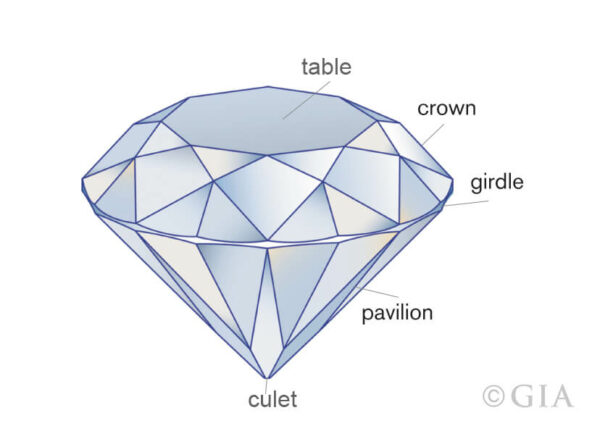
In the pursuit of maximum sparkle, consider only those diamonds with an “Excellent” or “Ideal” Cut grade on a GIA or AGS certificate. This recommendation stands as a safeguard, ensuring you select a diamond that truly sparkles, embodying the quintessential charm and allure we so love in these precious gems.
The 4Cs Order of Importance: The Key to Choosing Your Perfect Diamond
When considering the order of importance for the diamond 4Cs—Cut, Color, Clarity, and Carat—it’s crucial to understand how each characteristic individually contributes to the stone’s overall brilliance.
Firstly, Cut stands as the paramount quality, significantly determining a diamond’s sparkle. The artisan’s skill in creating an optimal Cut—maximizing light reflection and enhancing the stone’s allure—is crucial to the diamond’s aesthetics.
Secondly, Color follows closely. Though the eye struggles to distinguish between subtle color differences, choosing a colorless or near-colorless diamond helps prevent any potential yellowish tinge.
However, don’t be lured into buying the highest grade; focus on finding a diamond that is cost-effective yet still appears colorless to the naked eye.
To learn further, we encourage you to read our Diamond Color Guide that shows grades with real images for each.
Thirdly, Clarity impacts a diamond’s appearance. Seek a stone with minimal inclusions or blemishes—ideally, one that’s eye-clean” or where imperfections are not visible to the naked eye.
Although diamond size often captures our attention, the difference in size between diamonds, say a 1-carat and a 1.2-carat, is less noticeable than one might think.
Lastly, Carat, often perceived as the most significant characteristic due to its implication of size, ranks last in the hierarchy. Bigger doesn’t always mean better; a larger diamond doesn’t guarantee superior beauty or brilliance.
Decoding the Diamond 4Cs: A Summary of Importance
This piece has aimed to empower you with knowledge on the importance of the 4Cs—Cut, Color, Clarity, and Carat—in diamonds, guiding you in judging their quality, comparing them effectively, and understanding their fair market value.
Remember, a diamond certificate is essential. This document, ideally from a recognized lab like IGI, AGS, or GIA, offers verified details about each of the 4Cs, thereby providing the diamond’s true value.
If your diamond holds an EGL certificate, it’s wise to understand why such a diamond might be less desirable.
When people admire a diamond, they typically notice:
- Brilliance: The diamond’s light-reflective nature, significantly determined by the Cut and then Clarity.
- Color: Any discernible yellowish tinge.
- Size: Mainly dictated by the diamond’s Carat weight.
When it comes to the debate over size versus quality, the deciding factor is largely personal preference. Some might desire a larger diamond to command attention, but it’s important to remember that size doesn’t dictate beauty.
A smaller, excellently cut diamond boasting high clarity and optimal color may outshine a larger, lower-quality stone of the same price.
Indeed, a larger diamond with subpar clarity and cut might only attract attention if people intentionally observe it closely. However, a superbly cut diamond, regardless of its size, will captivate people with its brilliance, drawing their gaze naturally.
In short, a larger diamond isn’t always a more beautiful one. If size matters to you, opt for a diamond with a substantial visual appearance without compromising brilliance, achievable through a great Cut, Clarity, and Color.
We trust that this guide has illuminated the intricate world of diamond 4Cs for you, equipping you with the confidence and insight you need when diamond shopping. Enjoy your quest for the perfect diamond!
Still not sure where to buy your diamond?
We always recommend shopping diamonds online and created a Full guide to shop diamonds like a Pro.
Among online retailers, here are our favorite stores click their logo to visit store
-
James Allen:
Our favorite online store, best diamond imaging technology available today, comes with the largest collection with more than half a million loose diamonds.
-
Blue Nile:
Widest collection of loose diamonds of all sizes, great imaging technology for most of their inventory (hundreds of thousands of diamonds), great customer support.
-
Whiteflash:
Home Of A CUT ABOVE® Super Ideal Diamonds, they stand out from the crowd by offering premium diamonds cuts, tailored to those who love the details, at great prices too.

